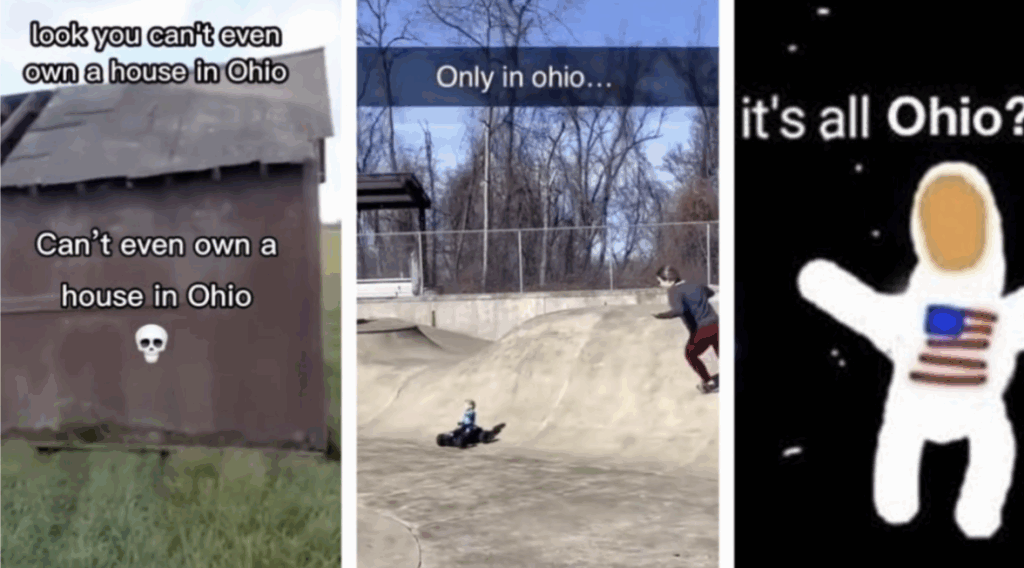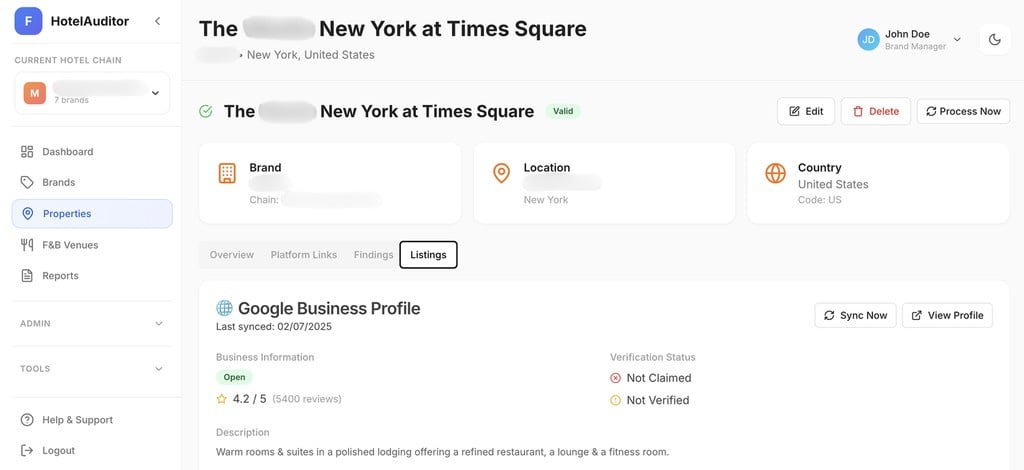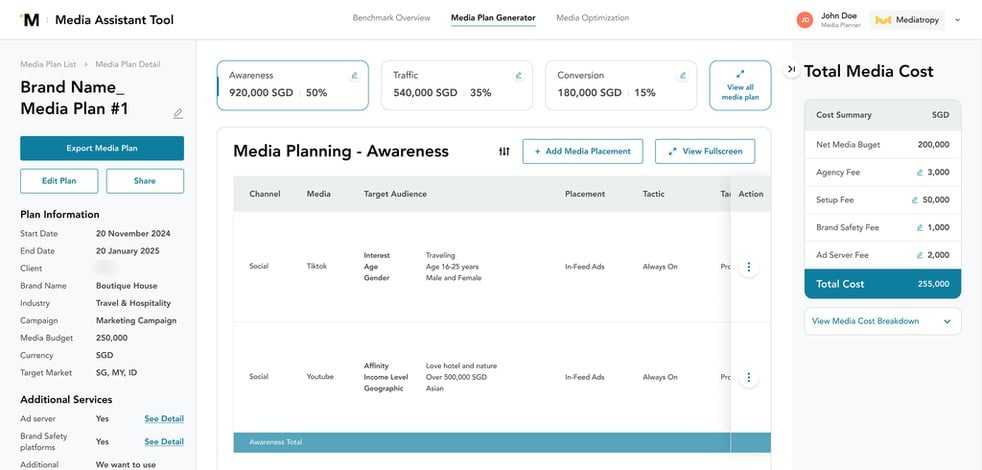You’ve probably heard someone say they’ve got “brain rot” after spending too much time on TikTok, scrolling through Skibidi Toilet edits, NPC livestreams, or “Only in Ohio” memes. It sounds like a throwaway joke. But for marketers, it’s anything but.
“Brain rot” content may look meaningless, but it’s a powerful mirror reflecting how younger audiences interact, express themselves, and make sense of an overwhelming digital world. For brands aiming to stay relevant—and understand how to market towards Gen Z—, ignoring this phenomenon means missing the pulse of today’s cultural vernacular.
What Is ‘Brain Rot’?
“Brain rot” is how Gen Z and Gen Alpha describe the overwhelming feeling of consuming chaotic, hyper-random, often surreal online content. It’s not just about dancing toilets and bizarre memes—it’s the emotional and social experience behind it: overstimulation, absurd humor, ironic detachment, and a deep desire for escapism.
This isn’t polished, influencer-perfect content. It’s low-effort by design. Raw. Weird. Often made with a single purpose: to entertain a hyper-connected audience that craves novelty and shares in-jokes faster than any algorithm can catch up.
To older generations, it might feel like digital junk food. But to younger users, brain rot content serves real functions. It relieves pressure, fosters community, and provides a cultural shorthand to signal belonging.
How to Market Towards Gen Z?
Brands that dismiss brain rot as silly noise risk falling out of touch. Because beneath the chaos is an emerging language of influence. It’s how young people:
- Express humor and identity
- Process anxiety about modern life
- Navigate social status in digital spaces
More importantly, it signals what’s replacing traditional cultural currency. It’s not about prestige or polish—it’s about speed, absurdity, and authenticity. For effective Gen Z marketing campaigns, brands must move fast, stay real, and lean into the chaos. If you’re not paying attention, you’re not just missing trends—you’re missing meaning.
Case Studies: What Brain Rot Content Tells Us
Let’s dig into some of the most iconic “brain rot” examples and what they reveal.
Skibidi Toilet

This viral YouTube series features disembodied heads in toilets battling camera-headed humanoids. Skibidi Toilet has found a massive following among Generation Alpha—kids born in the early 2010s and beyond. Although the series isn’t hosted on YouTube Kids (the platform designed for users under 13), it remains wildly popular with elementary schoolers. Case in point: Kim Kardashian’s 11-year-old daughter even gifted her a necklace that reads “Skibidi Toilet.”
Sounds nonsensical—but that’s the point. Its success with Gen Alpha lies in its simplicity, repetition, and meme-ability. It plays into the desire for low-stakes chaos, visual humor, and community remixing (think duets, remakes, fan theories).
Insight: It’s not just about attention—it’s about participation. Skibidi Toilet works because it invites users to remix and play.
‘Only in Ohio’

The “Only in Ohio” meme took off during 2021 and 2022, when bizarre news clips and outrageous video content tied to the state began circulating widely on social media. Users would tag these posts with the phrase “only in Ohio,” echoing the viral “Florida Man” headlines that spotlight strange regional behavior.
According to Sprout Social, the meme generated a staggering 10.2 million engagements—likes, comments, shares, and more—across all platforms in July alone, marking a 214% surge in interaction compared to the previous month.
Insight: This meme turns geographic banality into metaphor. “Ohio” becomes a placeholder for the unpredictable and uncanny digital natives’ way of expressing how weird modern life can feel.
Ever evolving internet slang and TikTokfication of culture.
Slang words, born on platforms like Twitch and TikTok, spread like wildfire among Gen Z. Gen Z slang terms like “Fanum tax” is about stealing food from friends (jokingly). “Rizz” refers to flirting skill. “Gyatt” is an exclamation, often reacting to physical appearance.
In addition, one of the more self-aware, meta trends to emerge from brain rot culture is the rise of the “Gen Z intern” meme. At its core, it’s a playful acknowledgment that younger digital natives—Gen Z especially—have a radically different tone, humor, and fluency with internet culture than older generations. They use a lot of Gen Z slang to experiment with brain rot aesthetics, emoji spam, chaotic edits, surreal humor—without breaking their traditional tone. Blaming it on the “Gen Z intern” makes it feel organic, not forced.
Ryanair’s social team is notorious for fourth-wall-breaking comments, often accompanying absurd photo edits, chaotic meme formats, and internet slang that feels ripped straight from a Gen Z group chat. Their tone is unapologetically chaotic, combining irony, self-deprecation, and meta-humor that speaks directly to digitally native audiences. Crucially, they lean into what works on the internet, not what works in traditional advertising.
Insight: Slang travels fast and often carries embedded cultural references. Knowing it isn’t about being trendy; it’s about understanding how youth communicate, form tribes, and build status.
Brain Rot’s Influence on Creativity and Culture
Brain rot aesthetics are now influencing artists and critics alike. Contemporary creators are embracing the chaos, not mocking it.
Artistic Commentary
Artist Viraj Khanna, for example, uses “brain rot” as a thematic lens—sculpting overstimulated, surreal figures that reflect digital life’s noise and anxiety.

BRAIN ROT: The Life You Live?’, a provocative art exhibition by acclaimed artist Viraj Khanna.
Takeaway for brands: Absurd visuals aren’t shallow, they’re vehicles for commentary. Don’t underestimate the emotional depth behind the chaos.
Aesthetic Shifts
Brain rot shares DNA with Lowbrow Art—this aesthetic has deep appeal for Gen Z, who often reject the overly curated, picture-perfect look of traditional branding in favor of something more raw, weird, and real.
This shift is now influencing even the most elevated of industries—high fashion. Take Loewe, for example. The luxury fashion house has been quietly (and strategically) partnering with micro-influencers whose content regularly goes viral—not because it’s polished, but because it’s chaotic, funny, or emotionally resonant. By tapping into brain rot-adjacent creators, Loewe is not just marketing to Gen Z, it’s respecting their visual language. And in doing so, they’re reshaping what prestige looks like in a post-aesthetic era.
Takeaway for brands: Whether you’re a fashion house or a fintech startup, embracing visual weirdness—when done with intention—can break through the noise and make your brand feel present, not performative. Think TikTok-native, not Instagram-curated. Think collage, chaos, and commentary, not just filters and finesse.
Implications for Campaign Planning
So how can marketers act on this? Here’s a cheat sheet to guide your Gen Z marketing campaigns:
- Design for chaos, not perfection
Use lo-fi edits, jump cuts, meme formats. Be platform-native, not brand-standard. - Speak the dialect
Don’t force Gen Z slang, but know it. Hire cultural translators—creators who are embedded in these spaces. - Embrace participatory formats
Give audiences tools to remix, react, and co-create. Participation drives deeper engagement than passive viewing. - Plan for fast cycles
Brain rot trends move quickly. Your content production needs to be agile, or at least modular, so you can pivot. - Stay curious—not cringe
It’s okay if you don’t get every trend. The key is to approach youth culture with curiosity, not condescension.
Our Final Word: This Isn’t Just a Phase
What looks like digital nonsense is often rich in insight. Brain rot isn’t just a joke, it’s the emotional texture of how digital natives live, laugh, and connect.
For marketers, the challenge isn’t to mimic the chaos. It’s to understand it and craft campaigns that speak to the deeper currents beneath the noise—especially if you’re trying to learn how to market towards Gen Z.











Discussion about this post